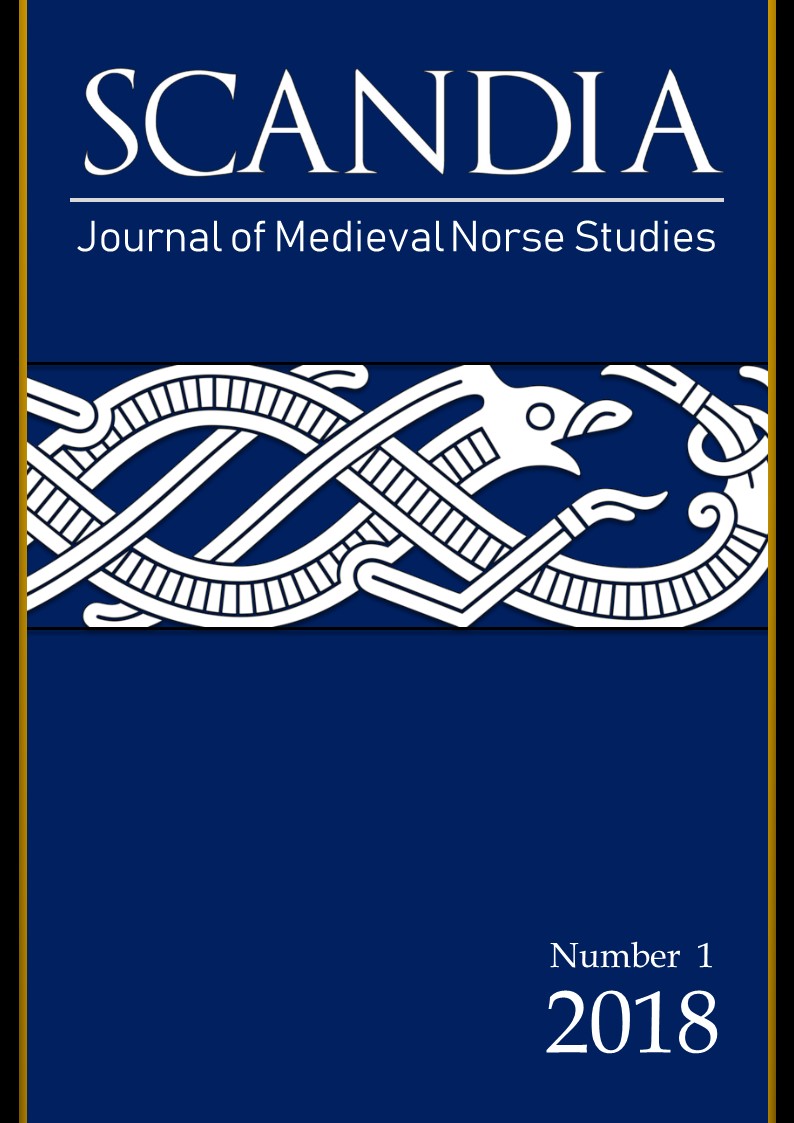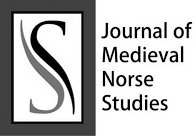Mulheres como funcionárias do culto ou Especialistas Rituais na Era do Ferro Germânica?
Abstract
Abstract: This article reviews women of Germanic tribes mentioned in early Greek and Latin sources that have , in the past, been interpreted as cult functionaries or even ‘priestesses’. Each case is presented and it is shown that although these women may have connections with the supernatural, with prophecy and even had political influence, there is no reason to presume they are associated with a particular cult or a formal role in any cult.
Resumo: Este artigo analisa as mulheres das tribos germânicas mencionadas nas fontes gregas e latinas primitivas que, no passado, foram interpretadas como funcionárias cultos ou mesmo “sacerdotisas”. Cada caso é apresentado e é demonstrado que, embora essas mulheres tenham conexões com o sobrenatural, com profecia, adivinhação e até tenham influência política, não há motivo para presumir que estão associadas a um culto particular ou a um papel formal em qualquer culto.
Downloads
References
Referências bibliográficas:
Fontes primárias:
CAESAR, De bello Gallico. In Du PONTET, Renatvs (ed.). C. Iuli Caesaris Commentariorum: Libri VII De bello Gallico cvm A. Hirti Svpplemento. Oxonii: E Typographeo Clarendoniano, 1900.
DIO DASSIUS. Roman Histories: Cassii Dionis Cocceiani Historiarvm romanarvm qvae svpersvnt edidit Vrsvlvs Philippvs Boissevain. Berlin: Weidmann, 1901.
ORIGO GENTIS LANGOBARDORUM. WAITZ, G. (ed.). Scriptores rerum Langobardicarum et Italicarum. Hannoverae: Impensis Bibliopolii Hahniani, 1878.
PAULUS DIACONUS. In WAITZ, G. (ed.). 1878. Pauli Historia Longobardorum. Hannoverae: Impensis Bibliopolii Hahniani.
SAXO GRAMMATICUS. In Gesta Danorum: OLRIK, J.; RÆDER, H. (eds.). Saxonis Gesta Danorum. Hauniæ: Levin & Munksgaard, 1931.
STRABO, Geographika. In JONES, Horace Leonard (ed.). (reprint 1954). The Geography of Strabo III. With an English translation. London: Heinemann, 1924.
TACITUS, Germania. In MUCH, Rudolf (ed.). Die Germania des Tacius 3 rd edn. Ed. Wolfgang Lange in cooperation with Herbert Jankuhn & Hans Fromm. Heidelberg: Winter, 1967.
TACITUS, Historiae. In. Simcox, William Henry (ed.). Cornelii Taciti Historiae – The History of Tacitus According to the Text of Orelli I–II. London: Rivingtons, n.d.
Bibliografia secundária:
ABRAMENKO, Andrik. 1994. “Drusus’ Umkehr an der Elbe und die angebliche Opposition gegen seine germanischen Feldzüge: Zum literarischen Vorbild für Cass. Dio 55, 1, 1-4 und Suet. Claud. 1, 2”. Athenaeum 82, pp. 371–383.
BAETKE, Walter. 1938. Die Religion der Germanen in Quellenzeugnissen. 2nd edn. Frankfurt: Diesterweg.
BEMMANN, Jan; GÜDE, Hahne. 1994. “Waffen-führende Grabinventare der jüngeren römischen Kaiserzeit und Völkerwanderungszeit in Skandinavien: Studie zur zeitlichen Ordnung anhand der norwegischen Funde”. Berichte der Römisch-Germanischen Kommission 75, pp. 283–640.
BIRKHAN, Helmut. 1997. Die Kelten. Wien: Österreichische Akademie der Wissenschaften.
DOMMASNES, Liv Helga. 1978. “Et gravmateriale frayngre jemalder brukt til å belyse kvinners stilling”. Viking 42, pp. 95–114. (=Dommasnes 1982).
DOMMASNES, Liv Helga. 1982. “Late Iron Age in Western Norway: Female Roles and Ranks as Deduced from an Analysis of Burial Customs”. Norwegian Archaeological Review 15, pp. 70–84.
SCHRÖDER, Franz Rolf. 1933. Quellenbuch zur Germanischen Religionsgeschichte. Berlin/Leipzig: De Gruyter.
GARDEŁA, Leszek. 2012. “Entangled Worlds: Archaeologies of Ambivalence in the Viking Age”. Unpublished PhD thesis. University of Aberdeen.
GRÄSLUND, Anne-Sofie. 2001. “The Position of Iron Age Scandinavian Women”. In Gender and the Archaeology of Death. Ed. Bettina Arnold & Nancy L. Wicker. Gender and Archaeology 2. New York: Altamira. pp. 81–102.
GUARDUCCI, Margherita. 1945–1946. “Veleda”. Rendiconti della Pontificia Accademia Romana di Archaeologia 21, pp. 163–176.
GUYONVARCH, Christian-J. 1961. “Notes d’etymologie et de lexicographie celtiques et gauloises 9”. Ogam 13, pp. 321–325.
HEIDE, Eldar. 2006. Gand, seid og åndevind. Bergen: University of Bergen.
Hultgård, Anders 2005. “Seherinnen”. In Reallexikon der Germanischen Altertumskunde XXVIII. Berlin / New York: De Gruyter. pp. 113–121.
KEIL, Josef. 1947. “Ein Spottgedicht auf die gefangene Seherin Veleda”, Anzeiger der österreichischen Akademie der Wissenschaften, Phil.-hist. Klasse 84(19), pp. 185–190.
KRAHE, Hans. 1961. “Altgermanische Kleinigkeiten 4: Veleda”. Indogermanische Forschungen 66, pp. 35–43.
MEID, Wolfgang. 1964. “Der germanische Personenname Veleda”. Indogermanische Forschungen 69, pp. 256–258.
PETR , Bo. 1993. “Male and Female Finds and Symbols in Germanic Iron Age Graves”. Current Swedish Archaeology 1, pp. 149–154.
SIMEK, Rudolf. 2006. Lexikon der germanischen Mythologie. 3rd edn. Stuttgart: Kröner.
Spickermann, Wolfgang. 1994. “Mulieres ex voto”: Untersuchungen zur Götterverehrung von Frauen im römischen Gallien, Germanien und Rätien (1.–3. Jahrhundert n. Chr.). Bochum: Brockmeyer.
SUNDQVIST, Olof. 2003. “Priester und Priesterinnen”. In Reallexikon der Germanischen Altertumskunde XXIII. Berlin/New York: De Gruyter. pp. 424–435.
TAUSEND, Sabine. 2009. “Germanische Seherinnen”. In Klaus Tausend. Im Inneren Germaniens – Beziehungen zwischen den germanischen Stämmen vom 1. Jh. v. Chr. bis zum 2. Jh. n. Chr. Geographica Historica 25. Stuttgart: Franz Steiner. pp. 155–174.
TOLLEY, Clive. 2009. Shamanism in Norse Myth and Magic I–II. FF Communications 296–297. Helsinki: Academia Scientiarum Fennica.
VOLKMANN, Hans. 1964. Germanische Seherinnen in römischen Diensten. Krefeld: Scherpe. de Vries, Jan. 1970. Altgermanische Religions-geschichte I–II. Leiden: Brill.
Referências online:
CAMBRIDGE DICTIONARY. Cambridge University, 2018. Disponível em <https://dictionary.cambridge.org> Acesso: 11 mar, 2018.
MERRIAM-WEBSTER DICTIONARY. Disponível em <https://www.merriam-webster.com> Acesso: 11 mar, 2018.
Downloads
Published
Issue
Section
License
The author (s) of the original submitted undertake to comply with the following:
- All authors are publicly responsible for it.
- The authors claim that this original is their own and that they assume full responsibility to third parties, whether moral or patrimonial, by reason of its content, stating that the work does not infringe any intellectual property rights of third parties.
- The author (s) agree to the copyrights of the original to Scandia Journal, to which they grant permission for its reproduction, editing and online publication.
- The author (s) grant their copyright of their original to the Scandia Journal, licensed under the Creative Commons Attribution License, which allows the sharing of this work with the acknowledgment of their authorship.
- The author (s) have permission and are encouraged to cite and distribute their original.



